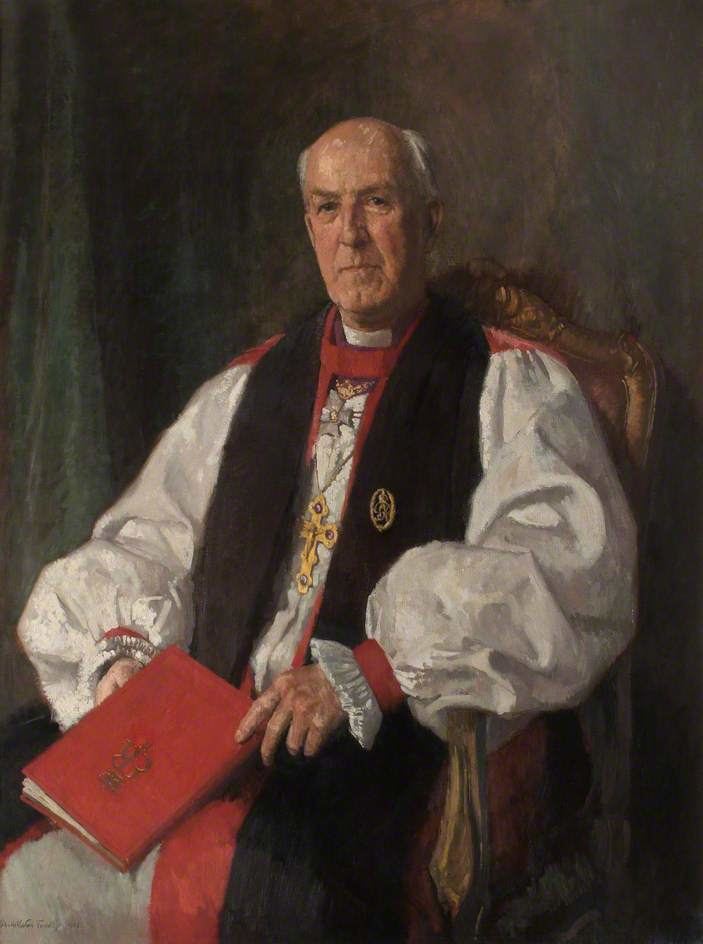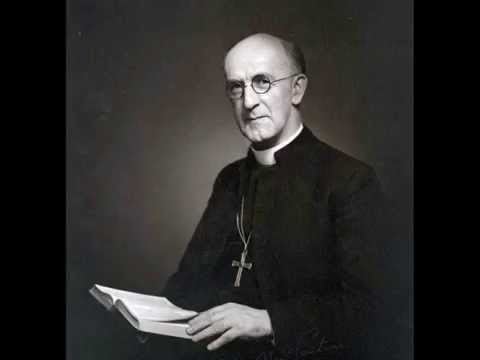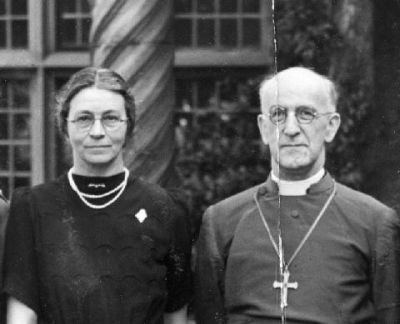Installed 1945 Spouse Rosamond Fisher | Birth name Geoffrey Worth-Fisher Term ended 1961 Name Geoffrey Fisher | |
Born 5 May 1887Nuneaton, Warwickshire, England, UK ( 1887-05-05 ) Books Touching on Christian Truth: The Kingdom of God, the Christian Church and the World Education | ||
The archbishop of canterbury geoffrey fisher on the coronation of the sovereign 2 june 1953
Geoffrey Francis Fisher, Baron Fisher of Lambeth, (5 May 1887 – 15 September 1972) was Archbishop of Canterbury from 1945 to 1961.
Contents
- The archbishop of canterbury geoffrey fisher on the coronation of the sovereign 2 june 1953
- ARCHBISHOP ENTHRONED
- Background
- Appointment as Archbishop of Canterbury
- Archbishop of Canterbury
- Nuclear controversy
- Successor
- Retirement and death
- Honours
- Legacy
- References

ARCHBISHOP ENTHRONED
Background

Geoffrey Fisher was born in Nuneaton, Warwickshire, and grew up in Higham on the Hill, Leicestershire. He was brought up an Anglican, being the son, grandson, and great-grandson of rectors of Higham. He was educated at Marlborough and Exeter College, Oxford. He was an assistant master at Marlborough College when he decided to be ordained, becoming a priest in 1913. At this time, the English public schools had close ties with the Church of England, especially in the case of Marlborough which had been founded for the education of sons of the Clergy. It was common for schoolmasters to be in Holy Orders, and headmasters were typically priests.

In 1914 Fisher was appointed Headmaster of Repton School, succeeding William Temple, whom he later also succeeded as Archbishop of Canterbury. Fisher married Rosamond Forman, daughter of Arthur Forman, who was a Repton master and Derbyshire cricketer. Among his pupils at the school was Roald Dahl, who went on to be a highly acclaimed children's author. In Boy, his autobiography of his childhood, Dahl wrote scathingly about Fisher's use of corporal punishment, which was, in Dahl's opinion, grossly overdone. By the time Dahl became a pupil, however, Fisher had actually left Repton, and so apparently it was actually Fisher's successor, J.T. Christie, whom Dahl had encountered.

In 1932 Fisher was appointed Bishop of Chester, and in 1939 he became Bishop of London.
Appointment as Archbishop of Canterbury
In 1942 Cosmo Gordon Lang was replaced by William Temple as Archbishop of Canterbury. Temple was a strong Christian Socialist, and both the Church and the general public foresaw great changes in the post-war period. However, Temple died in 1944. Some considered that the best choice now would be George Bell, Bishop of Chichester, but it was Fisher who was appointed.

Appointment of bishops in the Church of England is, ultimately, in the hands of the Prime Minister. Winston Churchill disliked Temple's politics, but had accepted Lang's advice that Temple was the outstanding figure and no one else could be seriously considered. This time, however, the situation was less clear-cut. It has been widely assumed subsequently that Bell was passed over because of his criticism in the House of Lords of the strategy of obliteration bombing of German towns. While it is probably true that this greatly reduced any chance of Bell being appointed, it is not clear that Bell was likely to be appointed, anyway. Temple had apparently regarded Fisher as his obvious successor.
Archbishop of Canterbury
Fisher put considerable effort into the task of revising the Church of England's canon law. The canons of 1604 were at that time still in force, despite being largely out of date.
He presided at the marriage of Princess Elizabeth and later at her coronation in 1953 as Queen Elizabeth II. The event was carried on television for the first time (the previous coronation, that of George VI in 1937, had been filmed for newsreels).
He is remembered for his visit to Pope John XXIII in 1960, the first meeting between an Archbishop of Canterbury and a Pope since the English Reformation, and an ecumenical milestone.
Fisher was also a committed Freemason, as were many Church of England bishops of his day. Fisher served as Grand Chaplain in the United Grand Lodge of England.
Nuclear controversy
In 1958, at a time of heightened fear of nuclear war and mutual destruction between the West and the Soviet Union, Fisher said that he was "convinced that it is never right to settle any policy simply out of fear of the consequences. ... For all I know it is within the providence of God that the human race should destroy itself in this manner." He was also quoted as saying, "The very worst the Bomb can do is to sweep a vast number of People from this world into the next into which they must all go anyway".
He was heavily criticised in the press for this view, but a number of clergy, including Christopher Chavasse, Bishop of Rochester, defended him, saying, "In an evil world, war can be the lesser of the two evils."
Successor
Fisher retired in 1961. He advised the Prime Minister, Harold Macmillan, that he did not consider Michael Ramsey, who had been his pupil at Repton, a suitable successor. Ramsey later relayed to the Reverend Victor Stock the conversation Fisher had with the Prime Minister.
According to this account, Fisher said:
I have come to give you some advice about my successor. Whomever you choose, under no account must it be Michael Ramsey, the Archbishop of York. Dr Ramsey is a theologian, a scholar and a man of prayer. Therefore, he is entirely unsuitable as Archbishop of Canterbury. I have known him all his life. I was his Headmaster at Repton.
Macmillan replied:
Thank you, your Grace, for your kind advice. You may have been Doctor Ramsey's headmaster, but you were not mine.
Ramsey was duly appointed.
Retirement and death
Fisher was made a life peer, with the title Baron Fisher of Lambeth, of Lambeth in the County of London (Lambeth being a reference to Lambeth Palace, the London residence of the Archbishop of Canterbury). By this time, appointment to the House of Lords as a peer had become a convention for retiring Archbishops of Canterbury (none had ever retired before Randall Davidson in 1928), although Fisher was the first to be created a "life peer" following the Life Peerages Act 1958.
Fisher died on 15 September 1972 and was buried in a crypt in St Andrew's Church, Trent, Dorset, a place he had chosen himself. He had been an honorary assistant priest in Trent since his retirement. A side chapel at Canterbury Cathedral was subsequently dedicated to his memory, situated next to a similar memorial chapel to Archbishop Michael Ramsey.
Honours
As well as being created a life peer, Fisher received the Royal Victorian Chain in 1949. and was made Knight Grand Cross of the Royal Victorian Order in 1953.
Legacy
A house at Tenison's School is named after him.
